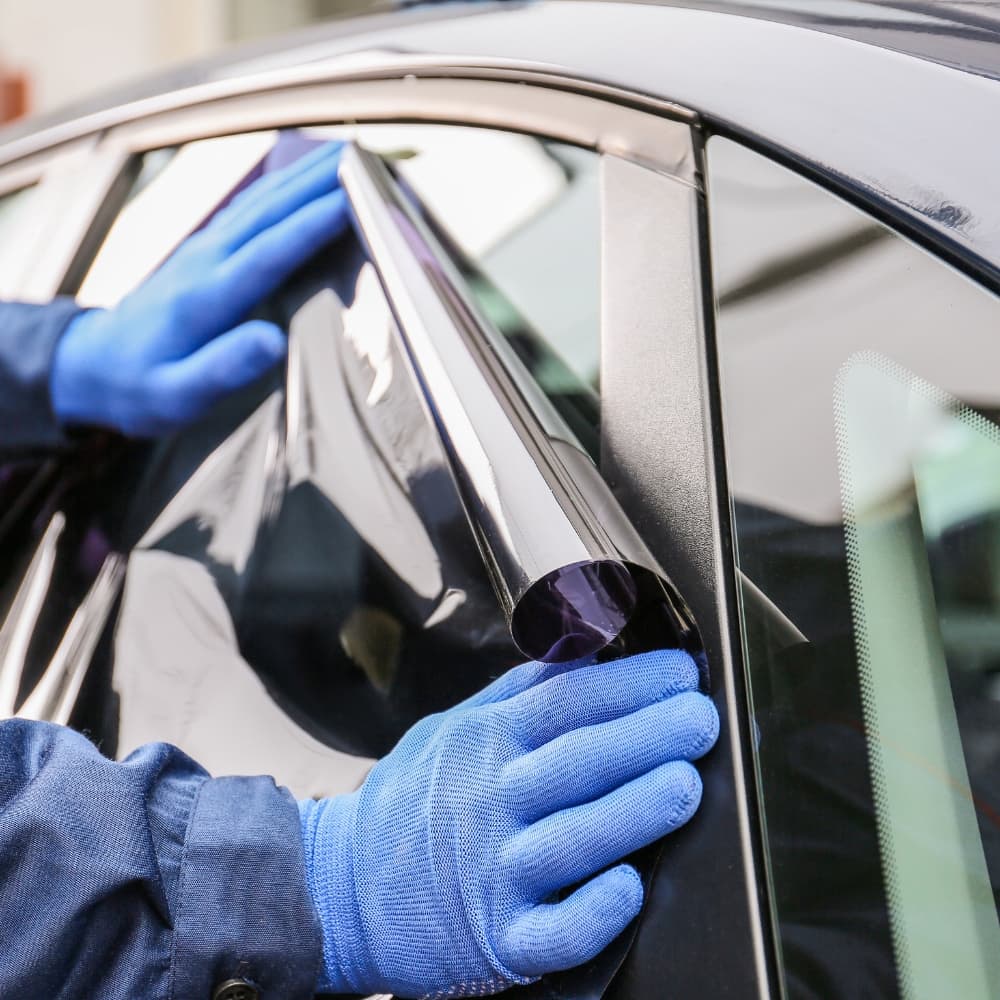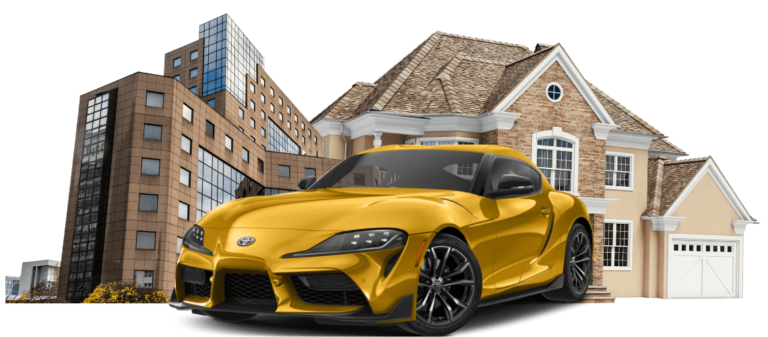Excessive heat inside a vehicle or building can make daily life uncomfortable, increase energy costs, and damage interiors. Many people wonder if tinted windows really reduce heat or if the effect is minimal. Quality window tint films can significantly lower interior temperatures, block harmful UV rays, and reduce glare. Understanding how heat-blocking works, the types of tint available, and their effectiveness will help you make an informed decision for your car, home, or commercial property. This guide explains the science behind heat rejection, compares tinted and untinted windows, and highlights additional benefits of professional tint installation.
How Much Heat Can Window Tint Actually Block?
Window tint films are engineered to reject a significant portion of solar energy, which includes visible light, infrared (IR), and ultraviolet (UV) radiation. Depending on the quality and type of film, high-performance tints can block up to 50–80% of solar heat and nearly 99% of UV rays. Infrared-blocking films are particularly effective in reducing radiant heat, which is a primary factor in interior temperature buildup. Studies and real-world tests show that vehicles with professionally installed tint can remain 10–15°F cooler than untinted counterparts under direct sunlight. For homes and commercial buildings, quality window films can reduce cooling demand, lower energy bills, and improve occupant comfort during hot summer months.
What’s the Difference Between Tinted vs Untinted Windows in Heat Control?
The heat reduction performance of a window largely depends on its Visible Light Transmission (VLT), Solar Heat Gain Coefficient (SHGC), and Infrared Rejection (IRR). Untinted windows allow most solar radiation to pass through, causing rapid heat buildup and glare. Tinted windows, however, reduce visible light penetration and reflect or absorb IR and UV energy. Real-world comparisons show that tinted vehicles can maintain significantly lower interior temperatures even on sunny days, reducing reliance on air conditioning. Similarly, in buildings, tinted glass lowers the cooling load, enhances occupant comfort, and protects furnishings from fading. The difference is measurable and makes tinting a practical solution for heat management.
How Does Window Tinting Block Heat and UV Rays?
How Much UV Dose Do Tinted Windows Stop, and Why Is That Important?
UV radiation can penetrate glass and cause skin damage, fading of car interiors, and deterioration of furnishings in homes and offices. High-quality tint films block up to 99% of UV rays, significantly reducing health risks and protecting materials. This prevention extends the lifespan of dashboards, leather seats, curtains, and flooring while minimizing sunburn risk for drivers, passengers, and occupants. Consistent UV protection also ensures that vehicles and buildings maintain their aesthetic appeal over time, avoiding costly repairs or replacements caused by prolonged sun exposure.
What Role Do Infrared Rays Play in Heat Build‑Up and How Does Tint Address Them?
Infrared rays carry the majority of solar heat energy, even though they are invisible. Traditional window films block some visible light and UV radiation but may not fully reduce infrared heat. Advanced IR-reflective or ceramic films are engineered to reflect or absorb infrared rays, effectively lowering interior temperatures. This means that vehicles stay cooler, reducing air conditioning usage and fuel consumption, while buildings experience lower cooling demand. By targeting infrared heat, these films provide a more comprehensive solution for thermal comfort beyond what simple tinted glass or blinds can achieve.
Are There Standards or Ratings to Look For in Heat Blocking Tint Films?
When selecting a heat-blocking film, it’s important to check ratings like Total Solar Energy Rejected (TSER), SHGC, and IR Rejection (IRR). TSER indicates the overall percentage of solar energy blocked, SHGC measures heat transmission through windows, and IRR indicates the film’s infrared heat rejection capability. Choosing films with higher ratings ensures optimal performance and guarantees that you receive the benefits promised by manufacturers. Certified installers often provide these performance specifications, allowing you to compare products and select the best film for your climate, vehicle, or property.
What Bonus Benefits Come from Tinting Windows Beyond Heat Reduction?
Window tinting offers advantages that extend well beyond reducing interior temperatures. Tinted films reduce glare, making driving safer and screens easier to read in cars or offices. They provide added privacy, limiting visibility from outside without darkening the interior excessively. UV protection also prevents fading of upholstery, dashboards, curtains, flooring, and artwork. For vehicles, tinting decreases AC load, improving fuel efficiency and extending the life of interior components. In homes and commercial buildings, reduced heat load can lower energy bills, increase occupant comfort, and potentially raise property value. The combined effect of heat control and these additional benefits makes tinting a smart investment.
What Are the Different Types of Tint Films and How Do They Compare for Heat Control?
Window tint films are available in several types, each offering different levels of heat rejection, UV protection, and cost. Understanding their characteristics will help you choose the right solution for your car, home, or commercial property. The main categories are dyed, metalized, and ceramic/nano-ceramic films, each with unique advantages and limitations. Selecting the proper type ensures optimal comfort, energy savings, and long-term protection for interiors while maintaining visibility and aesthetics. Below, we break down each type and what you should consider before installation.
Dyed Film: What It Offers and Its Limits
Dyed films are the most cost-effective option for heat reduction and privacy. They contain a layer of dye that absorbs sunlight, reducing glare and providing some UV protection. While dyed films can reduce heat moderately, their infrared rejection is limited compared to metalized or ceramic films. Over time, dyes may fade or discolor, especially in regions with intense sun exposure. Dyed films are ideal for drivers or property owners on a budget seeking basic comfort and glare reduction without high upfront costs. They work well for areas with mild to moderate heat levels but may not provide maximum energy efficiency or interior protection.
Metalized Film: How It Reflects Heat and What to Watch For
Metalized films contain tiny metallic particles that reflect sunlight and block both infrared and UV rays. These films provide stronger heat rejection than dyed films, often cooling interiors more effectively and reducing energy costs. However, the metallic content can interfere with electronic signals, such as GPS, radio, or toll transponders, which can be a consideration for cars or office buildings using wireless systems. Metalized films are durable, long-lasting, and maintain their color and performance over time. They are suitable for owners who want better heat rejection without investing in premium ceramic solutions, but need to weigh potential signal interference.
Ceramic / Nano-Ceramic Film: Premium Heat Rejection Performance
Ceramic or nano-ceramic films use advanced non-metallic particles to block up to 80% or more of solar heat, including infrared rays, without interfering with electronics. They also block nearly all UV radiation, prevent interior fading, and provide superior glare reduction. Ceramic films maintain high clarity, allowing visibility without darkening the space excessively. While typically higher in cost, they are ideal for regions with high sun exposure, vehicles with large windows, or commercial buildings seeking long-term energy efficiency. Many studies show ceramic films outperform dyed and metalized options in heat rejection, durability, and overall comfort, making them the premium choice for serious performance and protection.
Which Tint Film Type Is Right for You Based on Your Vehicle or Building?
Choosing the right film depends on several factors: climate, exposure to sunlight, building or vehicle type, intended use, and budget. Vehicles in hot, sunny regions benefit most from ceramic films, while moderate climates may find metalized or dyed films sufficient. Residential or commercial buildings with large glass surfaces can see significant energy savings with higher-performing films.
| Film Type | Average Cost Range | Heat Rejection | UV Protection | Best Use Case |
| Dyed Film | $100–$300 | Moderate | Moderate | Budget-conscious, mild climates, basic glare reduction |
| Metalized Film | $150–$400 | High | High | Durability and strong heat rejection, minimal signal issues acceptable |
| Ceramic/Nano Film | $300–$700 | Very High | Very High | Premium performance, high-sun exposure, electronic-friendly, long-term investment |
At OC Tint Solutions, we guide clients in selecting the best film based on these criteria and ensure professional installation. Our team evaluates vehicle or building needs, exposure angles, and budget considerations to recommend the film that delivers maximum comfort, protection, and energy efficiency. Whether you need partial coverage for a car or full coverage for home or office windows, choosing the right film ensures you get the most value from your investment.
How to Choose a Reliable Installer and Ensure the Tint Will Perform as Promised?
Choosing a skilled and trustworthy installer is critical for ensuring your window tint performs as advertised. Look for technicians with brand certifications, such as 3M, XPEL, or SunTek, and verify that they offer a labor warranty in addition to the manufacturer’s film warranty. Installation quality directly impacts heat rejection, clarity, and durability. Proper surface preparation, a clean work environment, and precise application prevent bubbles, peeling, or uneven coverage. Ask your installer for performance data or manufacturer ratings of the film they use to ensure you are getting the claimed infrared and UV rejection levels. Additionally, in the U.S., check local regulations for vehicle tints, including VLT limits and reflectivity standards, to ensure compliance and avoid fines.
What Questions Do Vehicle Owners or Property Owners Frequently Ask About Heat‑Blocking Tint?
Many people have similar questions when considering heat-blocking window films. Common inquiries include:
- “Will tinting my car windows reduce the inside temperature significantly?” Quality films can lower interior temperatures by 10–15°F in vehicles and reduce cooling costs in buildings.
- “Is it legal to use very dark or high-performance films in my state?” Regulations vary; always check local laws before installation.
- “Does home window film pay off in energy savings?” Energy-efficient films can reduce AC load and lower electricity bills over time.
- “Will the film reduce visibility or interfere with electronics in my car?” High-quality ceramic or nano-ceramic films maintain clarity and do not affect signals, unlike some metalized films.
- “How long does the heat rejection benefit last before film degrades?” Most premium films maintain performance for 5–10 years with proper care.
These questions help guide your decision and ensure you choose the right product and installer for your needs.
What Is the Bottom Line: Is Window Tinting Worth It for Heat Reduction?
Quality window tinting is an effective solution for controlling interior heat, reducing glare, and protecting interiors from UV damage. Vehicles with professionally installed films stay cooler, require less air conditioning, and experience reduced wear on dashboards and upholstery. Homes and commercial buildings benefit from lower cooling costs, improved comfort, and protection of furnishings. The greatest benefits occur in sunny, high-UV regions, where heat and glare are persistent. Choosing the right film type, ensuring professional installation, and adhering to local regulations are crucial for achieving the expected performance. Consult with OC Tint Solutions to evaluate your vehicle or property, select the best film, and ensure proper installation for lasting heat-blocking benefits.




